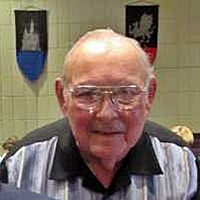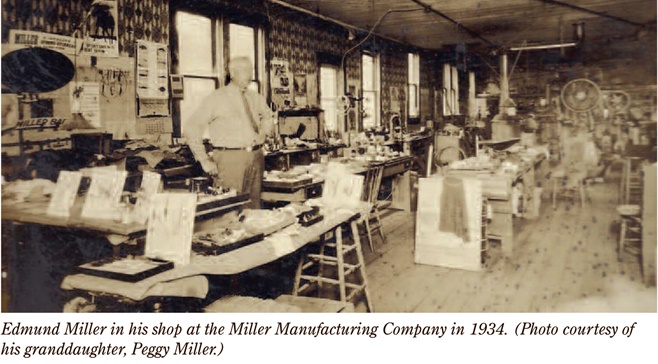
Welcome to Hemlock and Canadice Lakes!
Barns Businesses Cemeteries Churches Clinton & Sullivan Columns Communities Documents Events Time Line Fairs & Festivals Farm & Garden Hiking Homesteads Lake Cottages Lake Scenes Landscapes Library News Articles Old Maps Old Roads & Bridges Organizations People Photo Gallery Podcasts Railroad Reservoir Schools State Forest Veterans Videos
|
“A Historian Reminisces” by Havilah Toland |
|
|
A Historian Reminisces on Springwater and Canadice By Havilah Toland November 2014 Havilah Toland. It is said, and I think accurately so, that when one lives in the midst of abundance, that which others may long to enjoy is usually overlooked, ignored, or in other ways not appreciated. Take, for example, the incomparable area in which we live. Tourists travel miles to view and experience the stately hills, the creeks with their glistening bubbling waterfalls, and the resplendent valleys collecting and filtering spring-fed and runoff waters destined to be the very life-sustaining necessity of so many thousands. The lakes, dammed to supply year-’round availability of the treasured commodity, are treasures by themselves, just for the peaceful tranquil sight. But, how many who live in these coveted surroundings really take advantage of and appreciate them? Recently, this old mind decided to take a short drive just to enjoy a brief restful sojourn from ever present tensions. North on 15A, right on the Old Bald Hill Road, and then up the Johnson Hill Road took me back through, to me, relatively recent history. On the left is the home of Carlton Hoppough, years ago the home and boat factory of Burt Johnson who, with the help of the older son, Deforest, created several boats used not only on the smaller Finger Lakes, but along the shores of Lake Ontario. A younger son, Glenn, demonstrated native creativity by designing and building by hand airplanes suitable for one. I remember about 1937 visiting at a time when Glenn was meticulously carving a propellor from a small part of an ash trunk. He sat in their kitchen and with a knife was shaving minute layers of wood, then sanding and measuring. The general sentiment was “It will never work!” But it did! The plane, powered by an old cycle engine, made from a skeleton of something light and strong, and covered by a canvas “skin,” actually took off and flew! Now with my mind fully tuned to the past, I continued up the road to the junction of Canadice Lake Road. The old abandoned house on the right, at one time the home of D. Byron Waite, an early historian in the Springwater-Canadice area, had later been the home of my family who had lived there at the time of my mother’s death. The house had then contained printing presses—one Gutenberg and one rotary—that had been acquired from The Springwater Enterprise. Whether it was Waite or my grandfather, Arthur N. Johnson, who acquired them, I don’t know. I do know that the latter enjoyed using them for announcements, “mini-books,” and the like. They were idle for five years before my mother’s death. I remember entering the house just a very short time afterwards, in 1940, when the country was mobilized for war and scrap metal was at a premium. Every item from the “press room” had been stolen and probably scrapped. Even at that young age, I remember the eerie feeling of the void in the empty room. From there I changed my attention as I turned north onto the Canadice Lake Road. Up on the right is the now vacant great old country home of Colonel Colegrove, a gorgeous home back then as were several along the short drive. My thoughts shifted a little from actual memories to inferences... As I recall, many of the Canadice Lake Road residents had lived the most enjoyable of lives. They had not only lived exceptionally creative lives, but had enjoyed their continual appreciation for their surroundings. But things changed when Hemlock Lake was acquired by the City of Rochester and this previously very popular resort lake was stripped of all cottages. Several families from the hamlet of Springwater and others had built facilities along the western shore of Canadice Lake. (These buildings were taken as well.) I then came to a spot where the lake is quite visible. I stopped and carefully walked down to the shore where the water was like a mirror reflecting the shadows of the western hill from the setting sun. I sat on a log for I don’t know how long. There was a cool breeze. It was soothing, refreshing, exhilarating. Could it be that this experience is the same that may have brought some in the past to the area? And could it be that which gave their minds the freedom to express their own special creativity? And may we understand and appreciate what this creativity has meant to the area and way beyond? An example came to mind. Colonel Colegrove, of whom I spoke before, had a daughter, Flora C. Harris. As an adult she invaded the business world and found suitable employment in Buffalo. There was an occasion, when talking with other employees, she described her home area and particularly the beautiful Canadice Lake. Fascinated by her account, two co-workers, Charles Cannon and Edmund Miller, expressed a desire to visit the area. From the first visit they “fell in love” with the great natural gifts and spent whatever free time they could enjoying the lake, so taken by it that they chose to leave the Bell Telephone company where they worked and start some sort of company in our area. Miller, the inventor, and Cannon, the business man, in partnership formed a company and started manufacturing earphones. That was about the WWI era. The product, “Cannon-Ball” earphones, were of a superior quality, and the development of tamper-proof design gave them two very strong contracts. It is said that at one time nearly all jails and other institutions with similar needs were equipped with “Cannon-Ball” earphones—countrywide! Then it was found that the earphones had useful applications in airplane communications. At one time most earphones used by pilots, especially for dive bombers, were applications of “Cannon-Ball.” Edmund Miller in his shop at the Miller Manufacturing Company in 1934. Photo courtesy of his graddaughter, Peggy Miller. Meanwhile, Miller spent leisure time in the area creeks and lakes trying out various types of fishing lures he had designed and fashioned. This being his first love, he separated from Cannon to start his own company, the Miller Manufacturing Company (manufacturing lures). So successful was he that his trademark lures became popular and sold nationwide and beyond! Both Cannon and Miller passed to their rewards many years ago and eventually both their companies disappeared. As I sat on that log looking out over the silvery lake and at about the location on the bank above the western shore where once stood the cottage designed by my mother and built by her father, the picture on an announcement appeared to my mind’s eye. It was in a loft bedroom of the Swiss chalet that I took my first breaths. The short note printed on one of those presses gave the usual information plus a drawing by my grandfather of a boy in a tiny sailboat casting off in unchartered waters. Here sat the octogenarian. It had only been a short while and only a very short drive, but in that interval I had recalled so many great contributions from this area that had made a difference, not just to a few but really to the whole world. Was it the indescribable stimulation of real communion with nature that allowed those who made the great differences to express their creativity, or was it the attraction they felt that brought them here? Perhaps the way to know is to go through the area, even find a log to sit upon, and let your mind drink in that uplifting, restful, and exhilarating experience!
|
||
|
Editor’s Note: Havilah Toland is the Historian of Springwater NY where he has resided for much of his life. Diane Olson is the Editor & Publisher of The Lake Country Weekender, LCWeekender@stny.rr.com Say you saw it in The Lake Country Weekender! |
||

